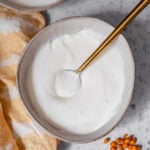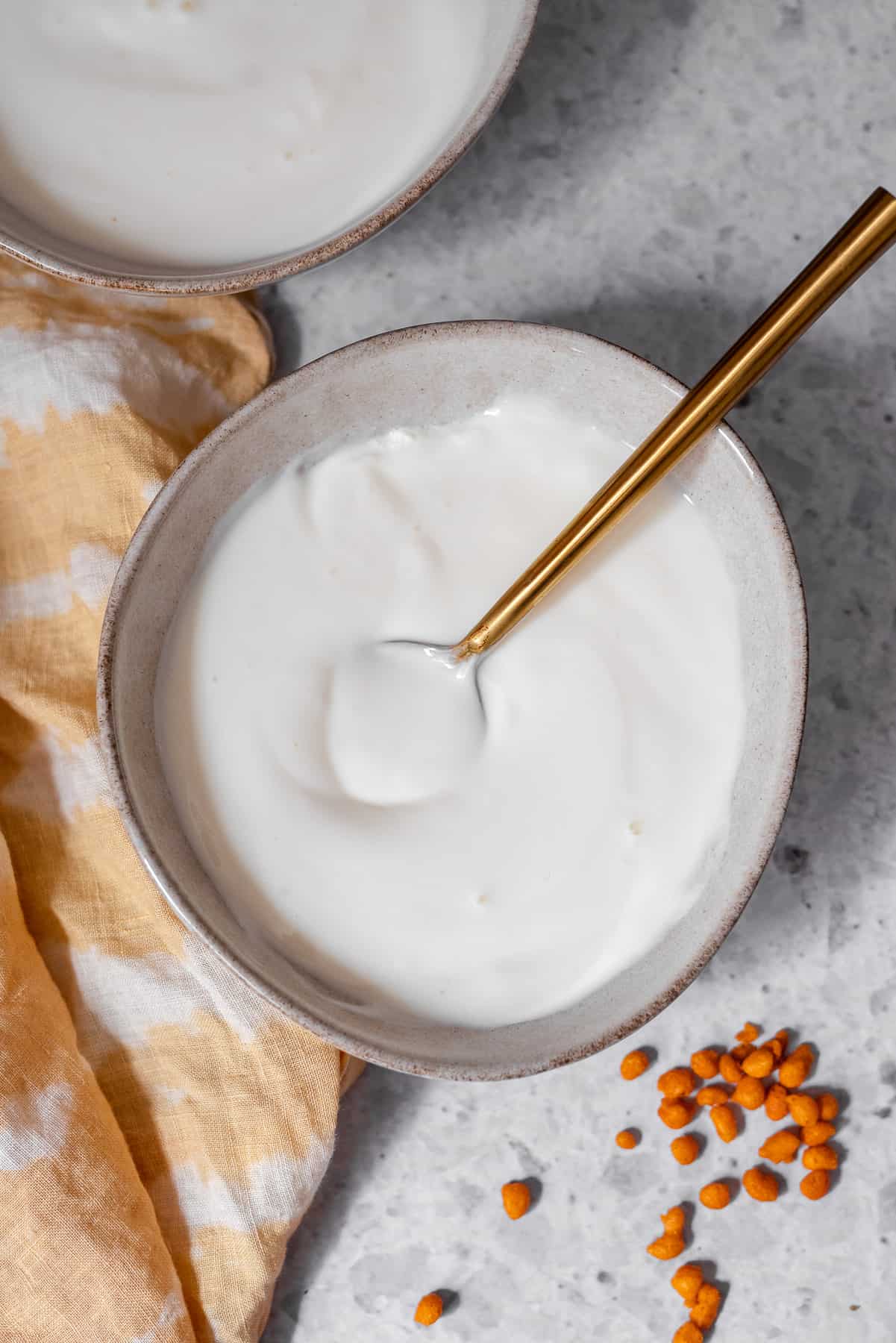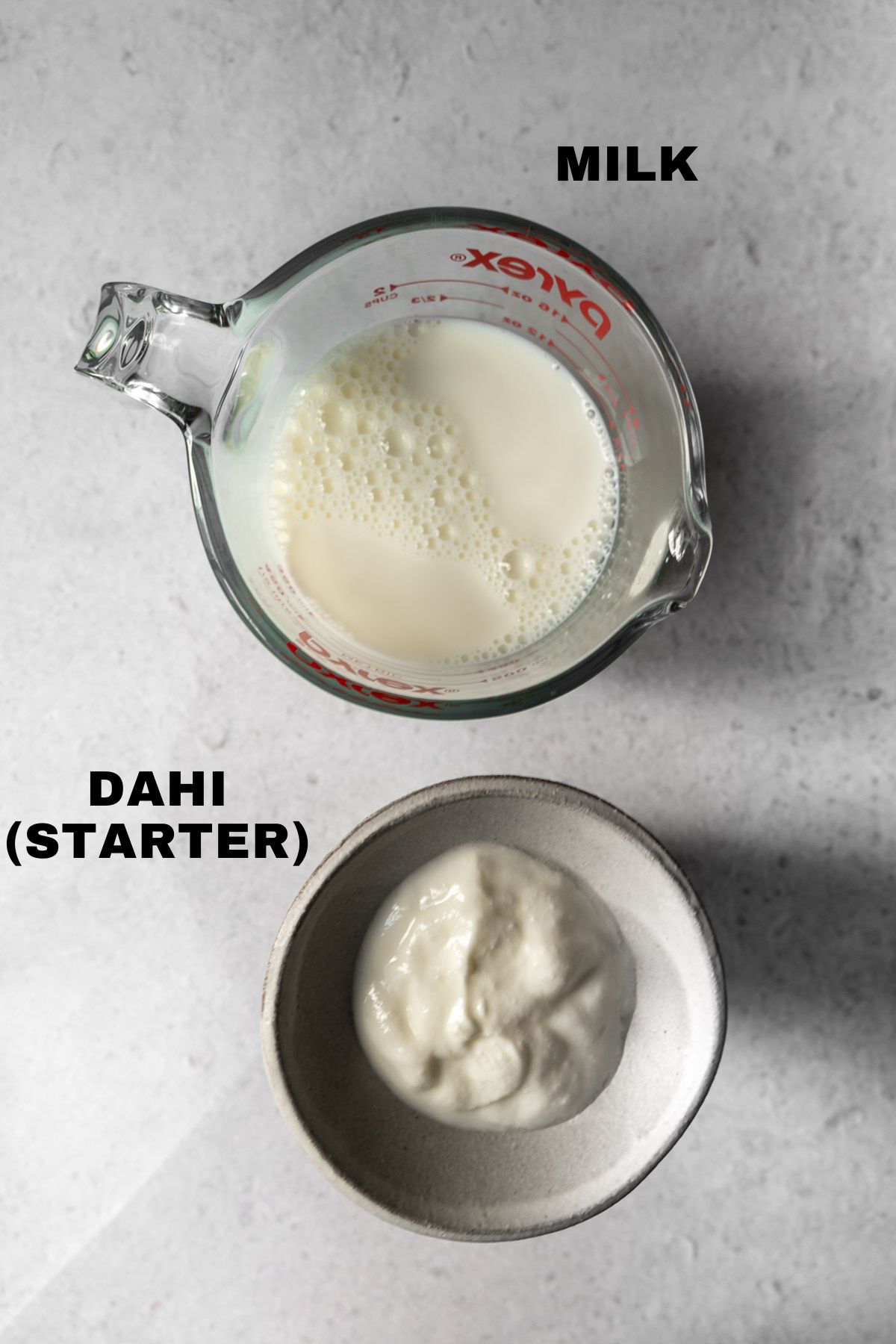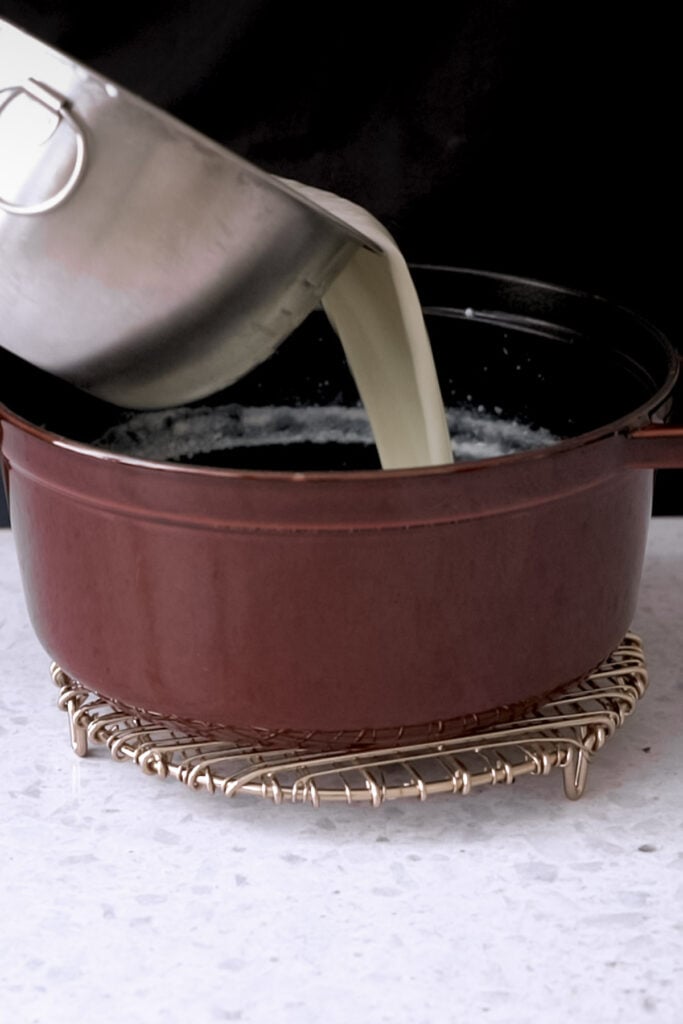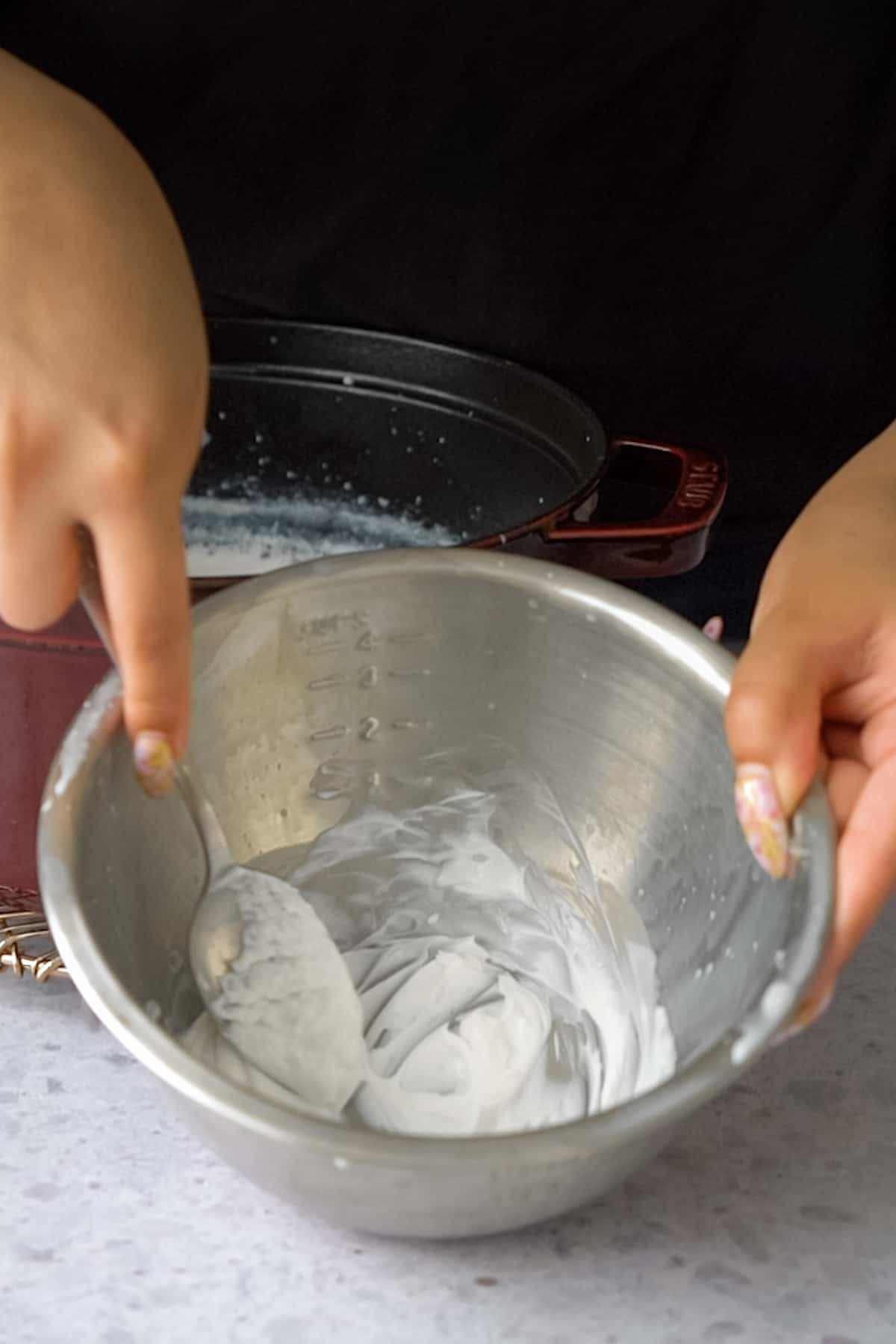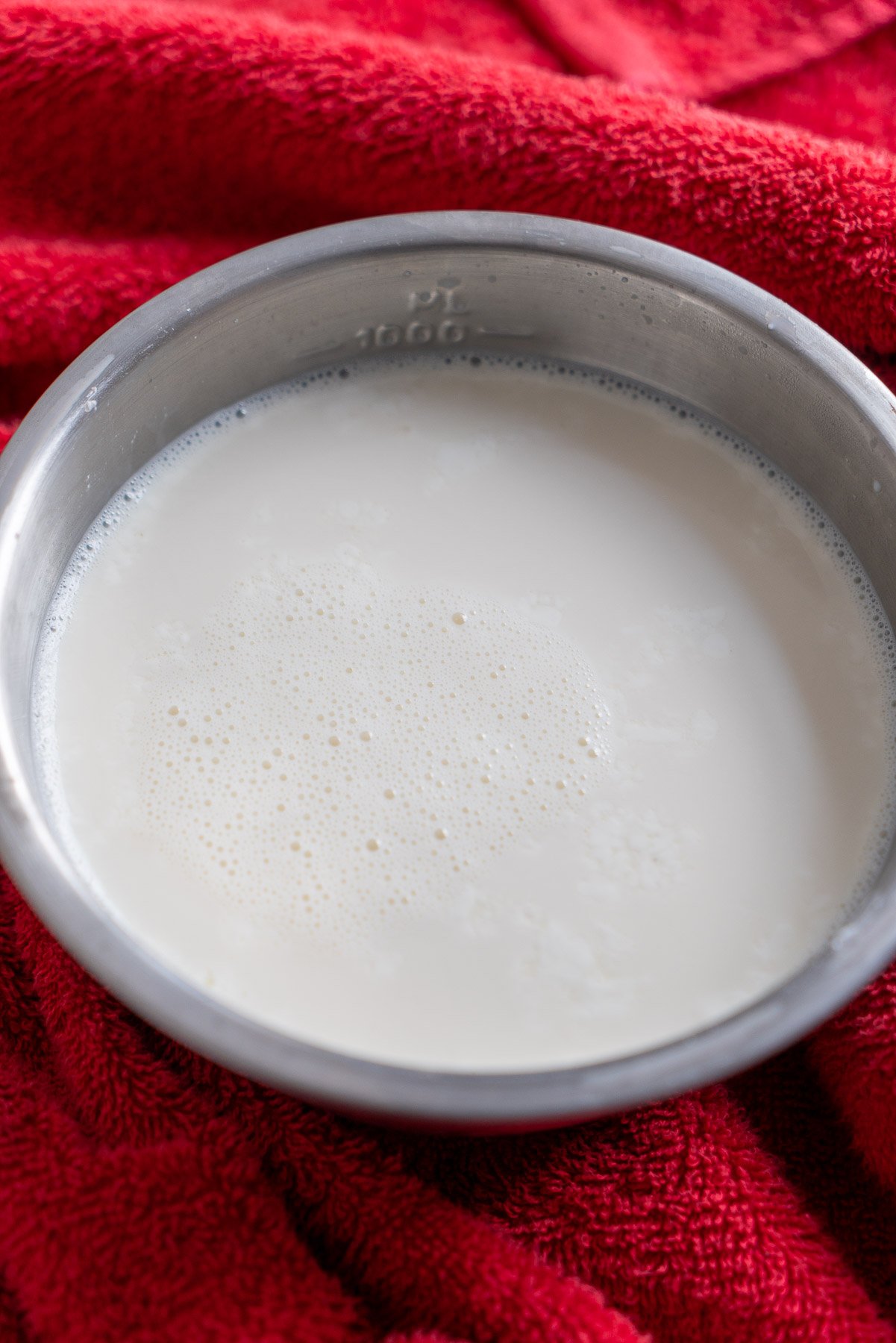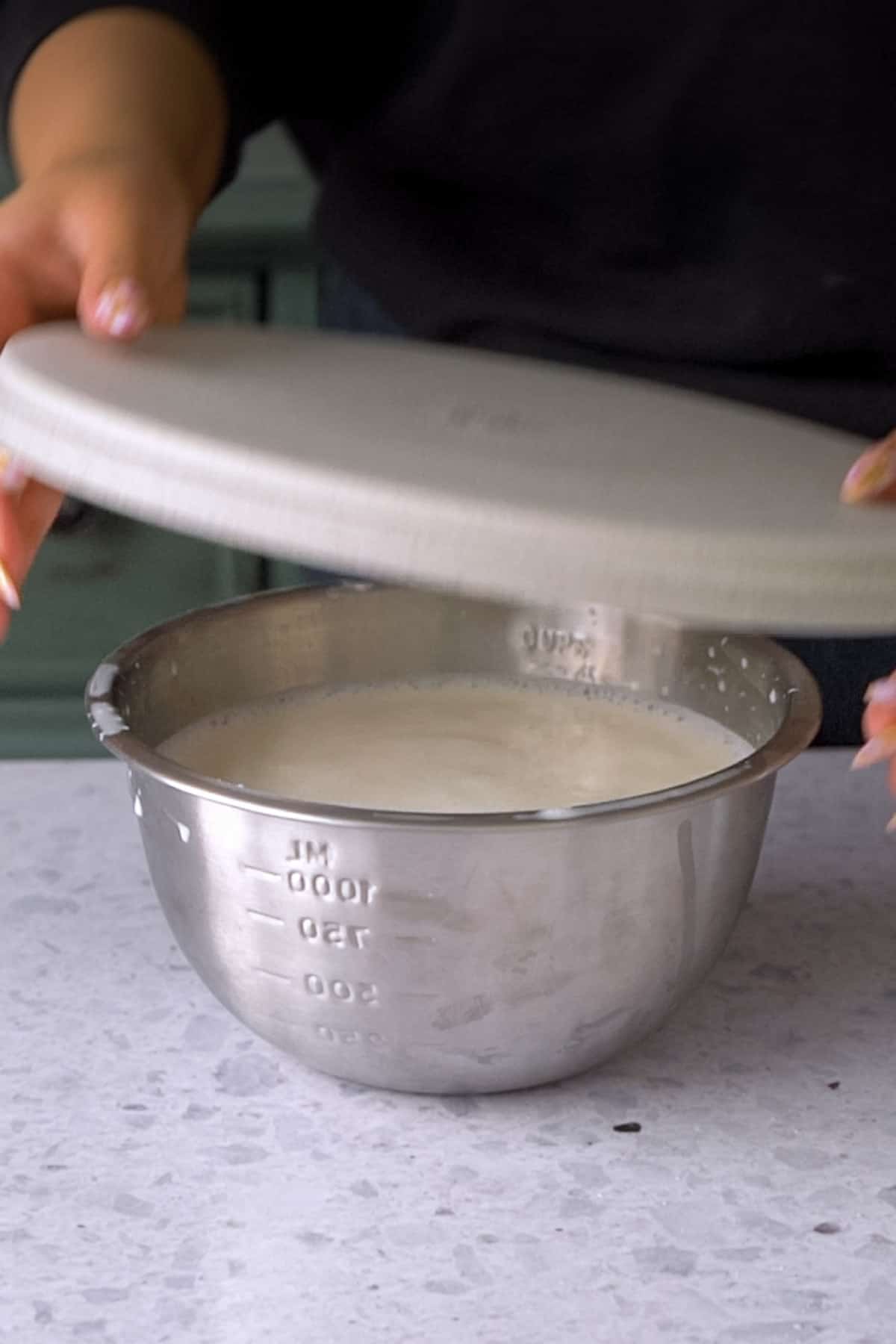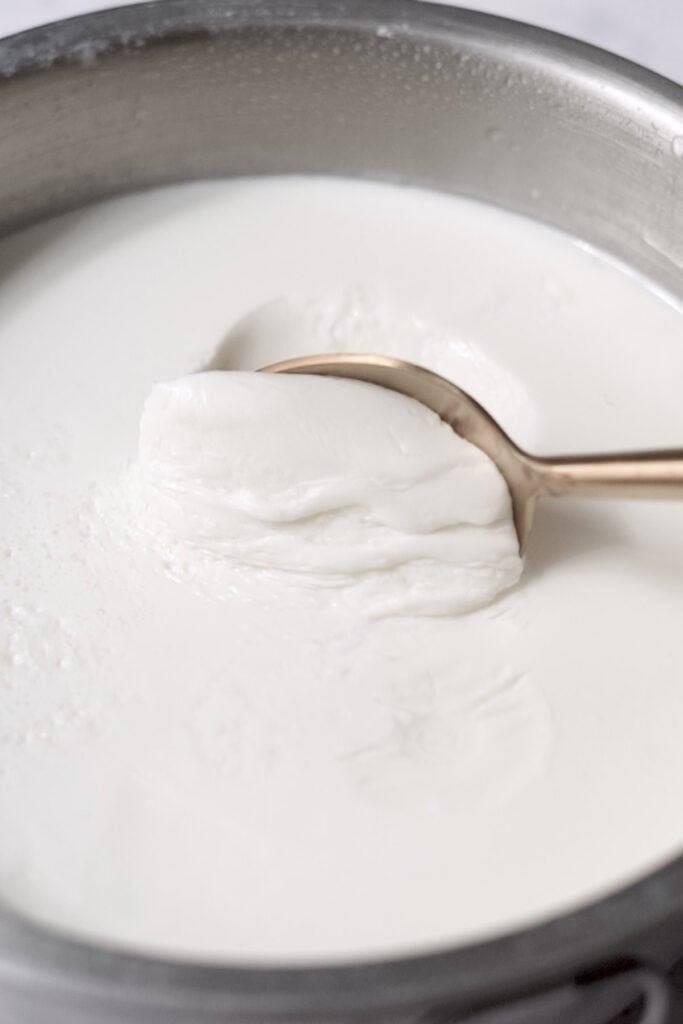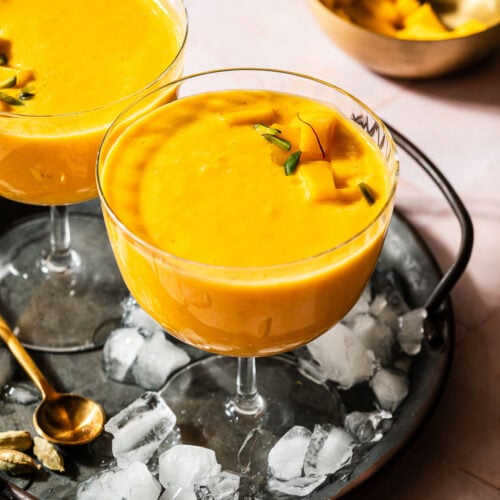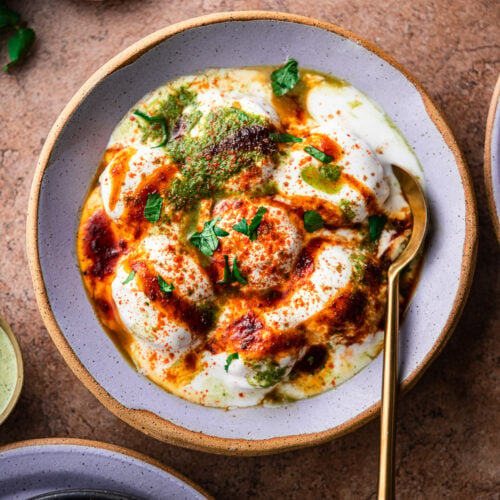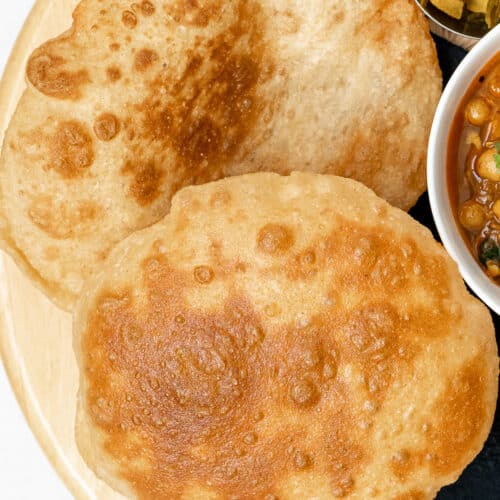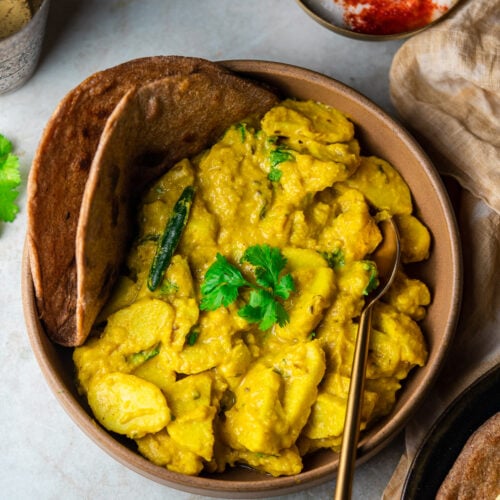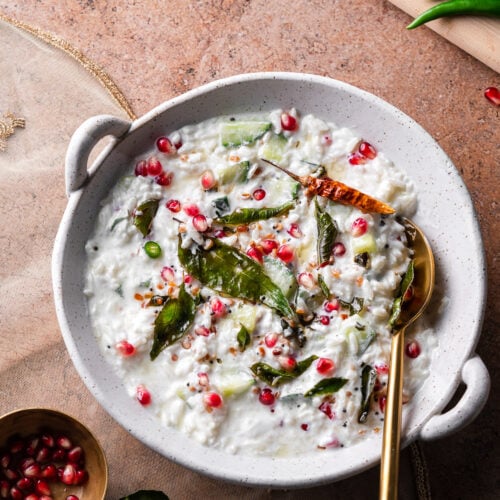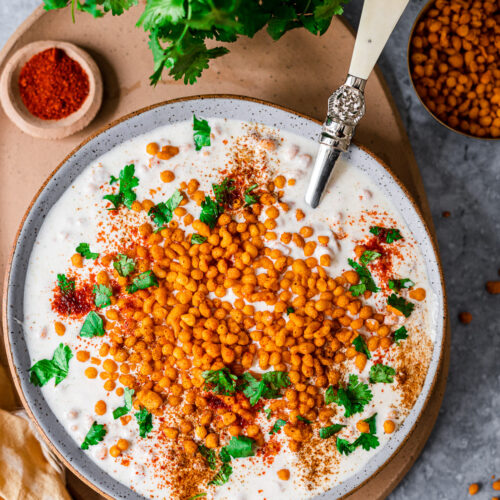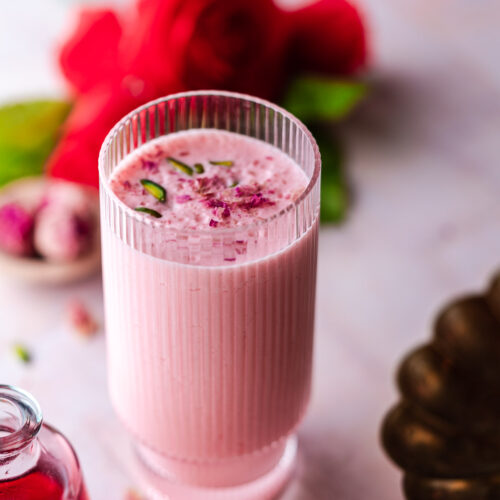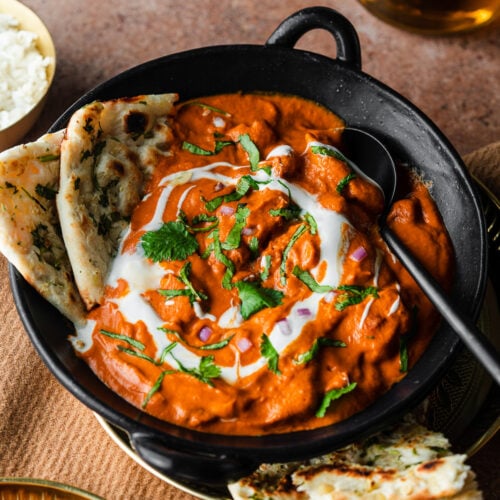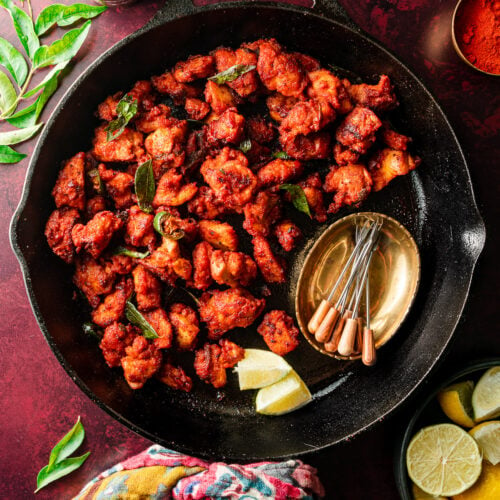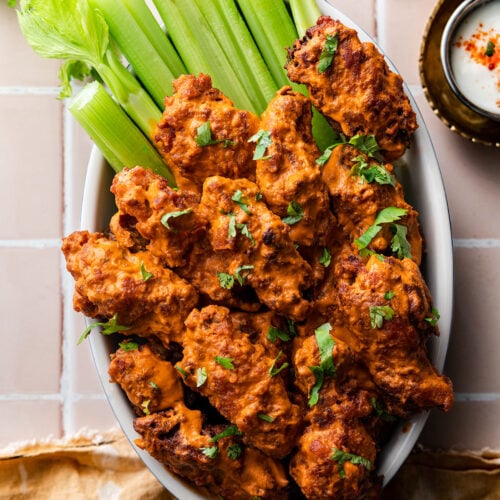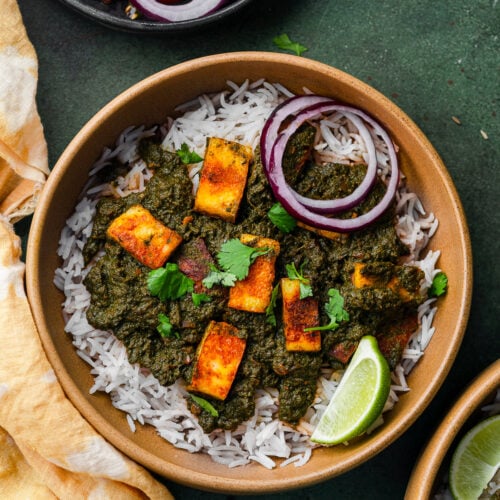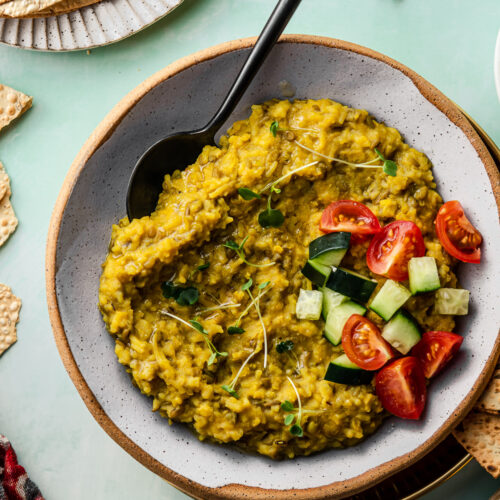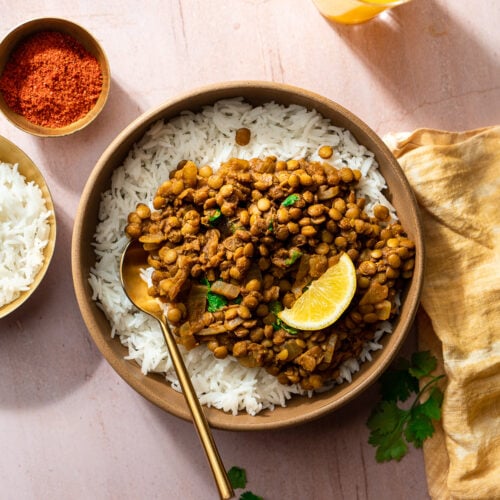I have to say, I’m extremely grateful for Masala and Chai. I’m not sure I would take the time to learn traditional Indian recipes without it. Now I’ll get to pass off these recipes to my kids, and of course to all my readers! My mom learned how to make dahi where she grew up in Uttar Pradesh in India. She actually learned how to make raita (yogurt side dish) from her great-grandmother in clay pots with fresh buffalo milk. She has always preferred to make homemade chutneys, achaars, yogurt, freshly dried herbs, and would dry out spices and grind them herself. No Instant Pot required for “instant yogurt”!! There’s some charm in doing things the old school way with Indian traditions and techniques passed down from generation to generation. Making dahi at home really only takes about 10-15 minutes of being involved. At the end, you have thick, creamy luscious homemade curd at a fraction of the price in-store. The ingredients are also super accessible - just whole milk and a yogurt starter!
What is Dahi?
Ma’am, this is just yogurt. Okay, it’s NOT though!! Dahi, translated to curd, is cultured milk that is boiled, frothed, and mixed with a starter to make an Indian-style yogurt in the Indian subcontinent. Most Indian households make their own homemade yogurt on a weekly basis. We use it to serve as a side with dal (lentils) and roti, lassi, added into curry for a bit of creaminess, or even to marinate meat or paneer. Once we reach the end of the dahi, we save a spoonful as a starter to make more for the next week. It’s also used as a base for a ton of side dishes, such as raitas like Boondi Raita and Dahi Vada.
Ingredients for Homemade Curd
Milk. Use plain whole milk to make dahi. Do not use fat free, 2%, plant-based, or any other types of milk. Yogurt Starter. The yogurt starter is a bacteria culture which helps the milk solidify into a creamy yogurt. It’s just a scoop of dahi. The best way to get the culture is by starting with someone else’s - whether you ask in your local town’s Facebook group, steal some from a family friend, visit your local Indian restaurant, or buy a container of dahi from the Indian grocery store to start with. You can also use plain Greek full-fat yogurt, but this will result in a slimy texture with most brands. In our family and friends circles, all the aunties borrow a bit of each other’s dahi for a new starter.
The Three Components to the Best Yogurt
Your quality of dahi will depend on three things:
How to make Dahi or Curd at home
Making dahi is so easy that a lot of people even do it daily. If you’re making it for the first time, then you’ll come to see really how accessible dahi is and how simple it is to troubleshoot.
1. Boiling the Milk
Rinse a heavy bottom pot really well. You can lightly oil or brush butter around the bottom and sides to prevent the milk solids from sticking and burning. Pour in the milk and bring it to a boil on low to medium heat. Keep stirring the milk to prevent the milk from burning. The milk will start to form a layer of malai (cream) at the top. You can choose to mix this in to the milk or allow the cream to develop. Once the milk comes to a boil, you’ll see a ton of tiny air bubbles. Reduce the heat to a low flame and let the air bubbles envelop the milk at the top so the milk is bubbly all around. This gives a stronger flavor and results in a thicker curd.
2. Cool and Froth the Milk
Remove the heavy bottom pot from heat and allow the milk to cool to about 135°F, or just until you’re able to comfortably touch the hot milk Pour the milk from the heavy bottom pot into a clay pot or a bowl that you’ll store the dahi in. Start with the pot as close to the bowl as possible, and continuously pour the milk while moving the pot higher and higher. This is called pulling the milk. It may be a bit messy so have a towel on hand. Do this one more time, transferring the milk from the bowl back to the heavy bottom pot.
3. Mix in the Starter
Add a teaspoon to a tablespoon of starter into the clay pot or bowl that you’ll store the yogurt in. Mix the starter super well with a spoon so it’s smooth and covers the bottom of the bowl. Pour the milk back into the bowl from the heavy bottom pot, using the same pulling technique. Give the milk a quick stir to ensure the starter is mixed throughout.
4. Cover and set
Cover the yogurt with a lid and wrap it tightly in a towel to allow it to set for 6-10 hours. If it’s warm, the dahi will only need about 6 hours to set. If it’s cooler, it will need about 10 hours to set and should be kept in a warm place like the oven. Avoid moving or disturbing the bowl until the yogurt has set. After the curd has set, refrigerate it.
Expert Tips and Tricks
It’s not uncommon to make smaller, individual bowls of yogurt. If you’re working out of a large bowl all week, the whey tends to separate leaving large puddles of it.Use full fat milk or whole milk only. This will work with 1% or 2% milk, but it won’t be as rich and may be too sour. This won’t work with plant-based milk.Temperature is very important when mixing the culture. It should feel hot to the touch.Once the culture has been mixed, put a lid on it and wrap it in a towel and leave it alone. Do not disturb the milk. Leave it in the oven to conserve the heat.Sour dahi can still be used in lassi or Kadhi. Once it becomes slimy, it should be thrown away.
Heating and Frothing the Milk
The milk should be brought to a temperature of at least 180°F or the boiling point at ~200°F before fermenting the milk. The act of boiling the milk improves the texture and richness of the yogurt. The “good” bacteria will consume the lactose, turning the lactose sugars into lactic acid, which traps the fat into a thick, creamy yogurt that’s a bit tart in taste. Heating the milk also kills any bad bacteria in the milk. The purpose of frothing the milk is to disperse the bacteria with the fats throughout the milk instead of letting the cream layer form at the top so it’s rich and smooth throughout the curd.
Recipes to try that use Dahi
Dahi is an incredibly versatile ingredient that can be used in several ways. Here’s a few recipes to check out using dahi:
As an ingredient
To marinate meat
Serve as an accompaniment
Recipe
I’d love to know what you thought of this recipe! Don’t forget to leave a comment and ⭐️ star rating below! Thinking about making this recipe? Enter your email and I’ll send it straight to your inbox to save for later. Plus, get new recipe inspiration from me every week! By submitting this form, you consent to receive emails from Masala and Chai.
